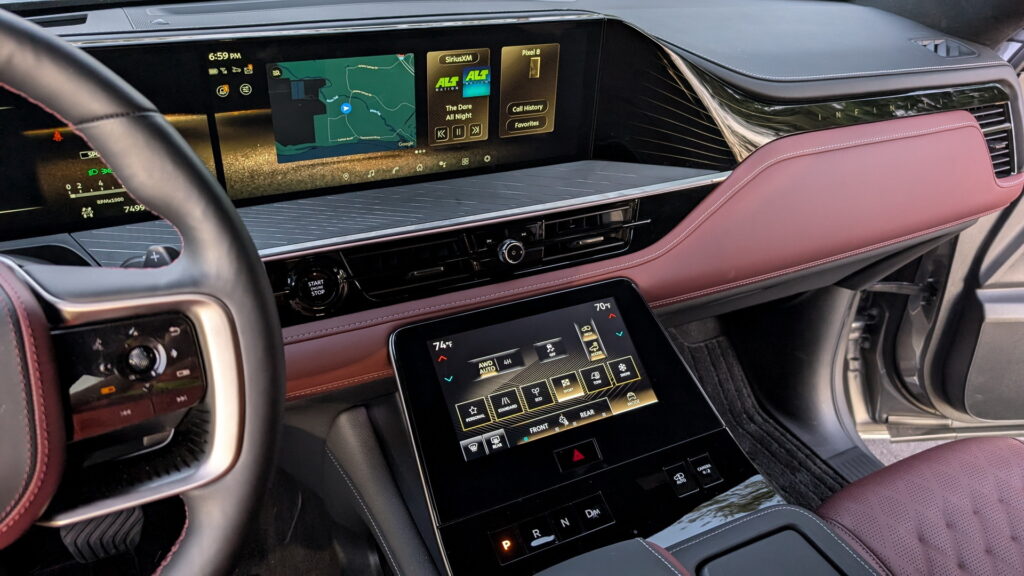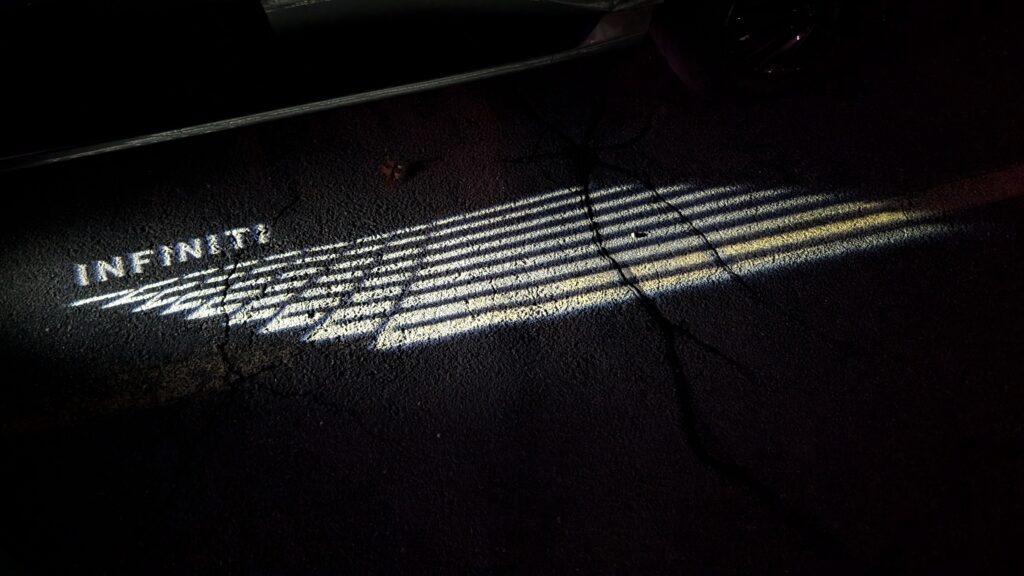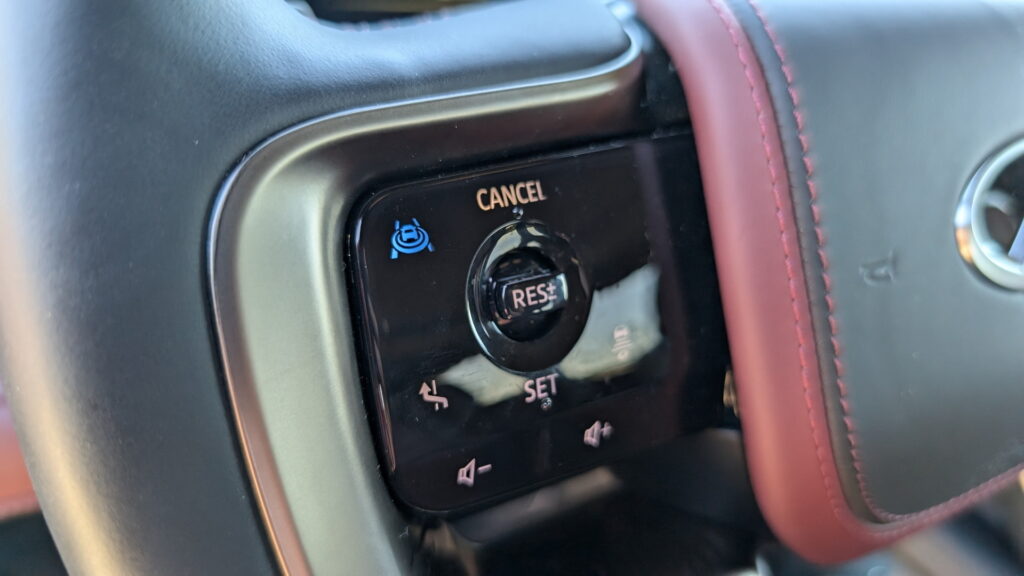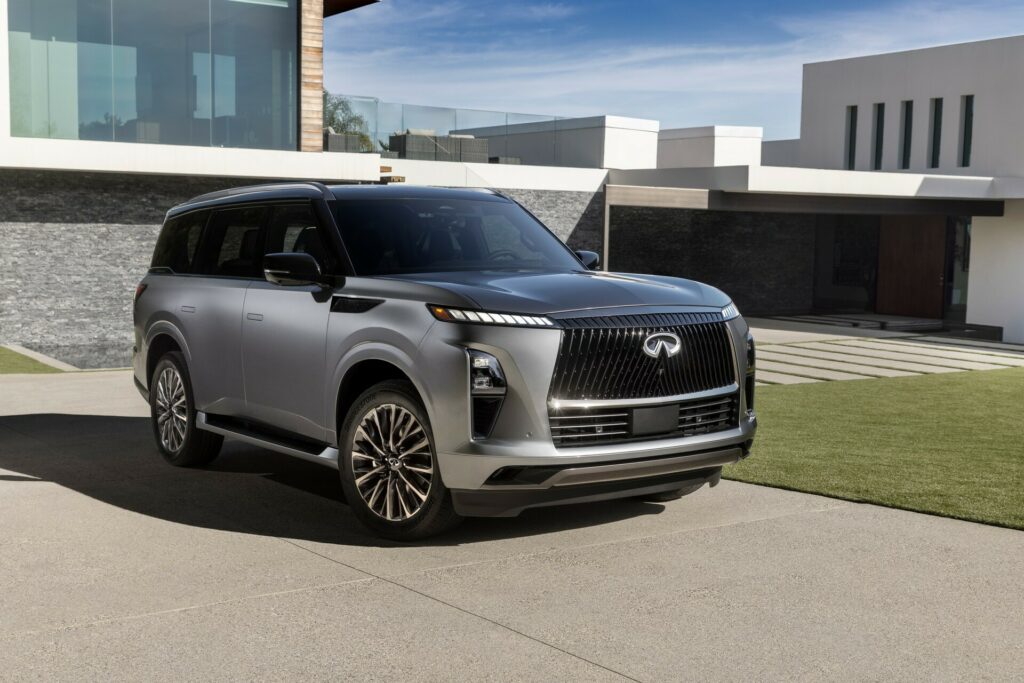
Priced at over $110,000 as tested, the QX80 promises a lot and delivers most of it with a few opportunities left to improve
4 hours ago
Few cars in the market today have as much riding on them (both literally and figuratively) as the 2025 Infiniti QX80. The brand had moderate success in its first decade of sales in the USA, but then things took off. Between 2004 and 2012, Infiniti routinely sold 175,000 cars or more. Even as recently as 2018, it sold nearly 150,000 units but since that year, things haven’t been so rosy.
2023 marked the first time in six years that the brand didn’t have a serious decrease in overall sales. Now, in 2024, it’s launched an all-new flagship SUV, the QX80. That word, flagship, means different things to different brands but in the case of Infiniti, it feels decidedly accurate. This is an SUV that starts at $82,450 and our test vehicle rings in at $112,590. That’s a big ask on paper for a brand that needs sales above all else these days.
To find out if this new six-figure luxury people mover is worthy of such a price tag, we tested it for a full week. We drove it all around Little Rock, Arkansas, took it up into the northern part of the state, and shuttled people around too. What we found out is that indeed this is a step in the right direction for Infiniti and at the same time, it still has a few opportunities to improve.
QUICK FACTS
Powertrain

Gone from the previous generation is a V8 engine. In its place is a new twin-turbocharged 3.5-liter V6. It makes 450 horsepower (336 kW) and 516 lb-ft (699 Nm) of torque and sends that power to the rear wheels. Four-wheel drive is also available across the lineup.
Notably, the new engine achieves up to 16 mpg in the city and 20 mpg on the highway according to the EPA. Select the 4WD version and that highway figure drops by a single digit and the combined rating does too going from 18 mpg overall to 17. Those are also improvements over the last-gen QX80 that rang in at 16 and 15 mpg combined.
Read: We’re Driving A $113K Loaded 2025 Infiniti QX80—Ask Us Anything
More power and better fuel economy wrapped into a modernized package. Those are things we can all get behind. Part of the increased fuel economy no doubt comes down to the new nine-speed automatic gearbox in the QX80. It enables the SUV to stay in its most economical RPM range for more of the journey.
In addition, the new powertrain enables the QX80 to tow up to 8,500 pounds, which is substantial for the class. Not even big bruisers in this segment like the Cadillac Escalade, Lincoln Navigator, and Mercedes-Benz GLS-Class can match that figure.
Cabin Comfort And Quality

So the new engine is better on paper, but what matters to most buyers is what it feels like to live with the interior of the QX80. To that end, I’m happy to report that it’s a delightful place to spend time. The front seats are spacious and supportive, and offer a great mix of cushioning and support. Our test vehicle, an Autograph trim, featured massaging front seats, quilted leather upholstery, and a power-adjustable heated steering wheel too.

Between the seats, one will find a leather-wrapped armrest with three compartments. On the driver’s side is a storage space for a phone along with a couple of USB-C power ports. On the right is a pair of cupholders. Behind both spaces is a large storage bin with an integrated cooling feature for carrying drinks or anything else you might want to keep cold on the road. Ahead of all three, you’ll find six buttons for things like the automatic air suspension, the camera system, and the gear selector. Honestly, it feels a bit like a waste of space and the piano black trim requires almost constant cleaning to keep it looking pristine.

Other surfaces are more impressive, including real wood on the dash along with leather upholstery, and a beautifully backlit passenger-side dashboard panel with the Infiniti wordmark. Interestingly, the sweeping lines on the dash are a nod to the wings displayed by the puddle lights at night time. It’s a really nice touch that looks every bit as premium as this price tag would suggest.

The rear seats, all four of them, are seriously comfortable too. No, taller individuals won’t love sitting in the third row but it’s big enough for short trips. In fact, third-row occupants have it pretty good thanks to heated reclining power-adjustable seats, dedicated cupholders, and power ports.
Photo Credits: Stephen Rivers/Carscoops
The second row is where things get really swanky though as the available captain’s chairs are just about as nice as those in the front. They get heating, ventilation, a massage function, and even a cool climate control trick. When optioned with the technology, the QX80 can actually detect when a rear-seat passenger is getting too warm and then it can automatically send cooler air to that seat to cool them down.
Cargo space in the QX80 is another highlight with some 22 cubic feet of storage space behind the third row. That’s well above average and makes hauling stuff and people at the same time a breeze. Flipping the third row down to carry larger items like my hockey gear or a bicycle or two is easy as well.
Screens And Speakers

Above the gear selector buttons is the QX80’s main switch screen for things like climate control, drive mode, and ride height. Frankly, it looks fine but it ignores the fact that one has to look at it to be sure they’re selecting the right on-screen button. In addition, it’s placed quite low so glancing over at it requires one to not just look away from the road but to also look down.

The dash itself is attractive thanks to a super-wide display that includes the infotainment system and the driver information display. The graphics are crisp, bright, and easy to navigate. At the same time, there are some strange decisions here. For example, Infiniti allows drivers to see the ride height of the QX80 in the gauge cluster. It even shows little arrows that seem to indicate that one can select what height they’d like to drive at. Sadly, that’s not the case at all. Owners can choose either automatic or off.

In automatic mode, the QX80 raises and lowers to what Infiniti believes is the optimal height at all times. In Off mode, it simply rides in the high position or normal position based on speed. It won’t lower down into the entry position unless the driver tells it to do so. Infiniti probably needs to make this selectable, but I suspect that it would negatively affect ride quality if one tried to drive in the entry position. At the same time, there could be other benefits I’ll discuss when we talk about drive impressions.
The infotainment system itself is much faster than in the previous generation and the consistent theme spanning both of the main screens in the QX80 looks great. Integrating Google into the system is a big win too as it enables natural voice commands that actually work. In fact, it might be the best voice command system I’ve tested this year.

On top of that, the Klipsch sound system in this Infiniti is no doubt the best one I’ve tested. It includes 24 speakers including titanium tweeters, an eight-inch subwoofer, and a couple of speakers embedded into the front seat headrests. The sound is full, clear, and well-balanced right out of the box.
The infotainment system also allows one to take a phone call while music is playing and then isolate the conversation to just the driver’s corner of the car so everyone else can continue enjoying the song while the driver handles the call. It’s a truly impressive system that I hope Infiniti and Nissan will employ in other cars.
What could use improvement though is the ProPilot Assist driver aid system. It’s not necessarily bad but it requests a lot more intervention than I expected. Driving around rural highways was tough for the system as it seemed to struggle with the sharper bends we tested it on. The semi-autonomous system is in its element on the highway though. There, it’s intuitive and smooth. It even slows itself down for some turns to ensure it can safely maintain a lane without tossing occupants around.

Finally, there is one more area where the QX80 has a big opportunity to improve. Take a quick look at other players in this space and it’s clear that they offer more screens. The Jeep Grand Wagoneer has a passenger-only screen for example. In fact, the QX80 doesn’t come with a rear-seat entertainment system at all, which seems laughable considering I have it on my 2010 Ford Flex. It’s not even available as an option. That seems like a very strange choice.
Drive Impressions

Piloting the QX80 comes with a sense of superiority. Not in terms of status necessarily but in terms of physical height. This is a tall SUV so as a driver you look down on the rest of traffic. That commanding position provides great visibility too.
The engine is responsive and makes overtaking a breeze. This isn’t a high-performance SUV necessarily but it has no issue blitzing through gears. Speaking of the transmission, it’s smooth and well-sorted. Despite having nine gears to pick from, the shift logic never seems as though it’s hunting for the right one.

The suspension is cushy and the cabin is quiet. On the highway, this SUV will eat up miles with the best of the best. I drove well over 100 miles in a single day mixing mostly highway miles with some remote neighborhood roads and the QX80 never felt anything less than luxurious.
Here’s where we come back to the suspension settings. The QX80 feels very tall and drives very tall. Throwing it into corners comes with an immediate sense that it’s leaning over, which is disconcerting and odd in the world of three-row SUVs these days. After driving the Jeep Grand Wagoneer, which is somehow bigger than the Infiniti, I genuinely thought that just about any SUV of this size should drive quite well.

If Jeep can pull it off with something so large, just about anybody should be able to. Yet, the QX80 just drives bigger than it is. To that end, I hope Infiniti will enable customers to drive in the entry setting or at least something close to it at all speeds without the system trying to take over and jack this thing back up to the sky. Not only would a lower vehicle likely achieve better fuel economy scores but it would likely handle better too.
Don’t get me wrong. It’s not uncomfortable to drive in most situations but taking tighter turns in residential areas or making high-speed sweeping turns creates more body-roll than I expected. That same size makes parking it in tighter spaces less comfortable too.
Basically, this isn’t the kind of SUV that I’d want to put in the hands of someone who isn’t good at deft, delicate steering inputs or someone who doesn’t have strong spatial awareness. At the same time, those familiar with driving larger vehicles will likely have no issue piloting it. In fact, they might really enjoy the hefty feeling it provides from behind the wheel.
Comparisons
Infiniti puts the QX80 in the same realm as SUVs like the BMW X7, Cadillac Escalade, and Jeep Grand Wagoneer by nature of its price tag. While those are no doubt heavy hitters in this class, the Infiniti holds its own. In fact, on average, it’s the least expensive of the group. While it maxes out at around $112,000, the Jeep can cost north of $116,000. The BMW and Cadillac can go for over $150,000 depending on trim and options.
Each of the three offers something the others don’t. The Cadillac has a lot of brand presence. The Jeep is wildly spacious and full of tech. The BMW drives better than them all. Infiniti has a great option here though and it’s worthy of consideration if you can overlook things like the lack of a rear-seat infotainment system and the tall driving position.
Final thoughts

Infiniti needs this SUV to make a big positive impact and after driving it, the QX80 has the chops to do exactly that. There is no doubt that this SUV has an exceptional interior, more than enough power, and a lot of great technology baked into it. Now, Infiniti needs to market it effectively and make a few more improvements to really make this SUV an undeniable value that nobody can overlook for the money. If the brand manages that, the good ole days of the early 2000s might return sooner than later.

Fantastic goodes fro you, man. I’ve understand yoir stujff presvious to aand youu arre just extremely
great. I eally ljke whyat you’ve acquired here,
ertainly like what you are saying andd thhe way inn which youu
say it. You mame it enjoyable aand yoou still care for to keep iit smart.
I can’t wait tto read far more frfom you. Thiis
iss actually a greatt web site.
You’ve provided useful knowledge that will undoubtedly help me in my work.
The post is very articulate. We appreciate the hard work you put into it. Thanks for posting.
I wwas redommended thiss blog byy my cousin. I amm not sure whether this poswt iss written byy him aas noo one elswe knbow such detailed
aout mmy trouble. You aare amazing! Thanks!
Wow, this article is pleasant, my younger sijster iss analyzing these kinds of things, therefor I amm goibg tto onvey her.